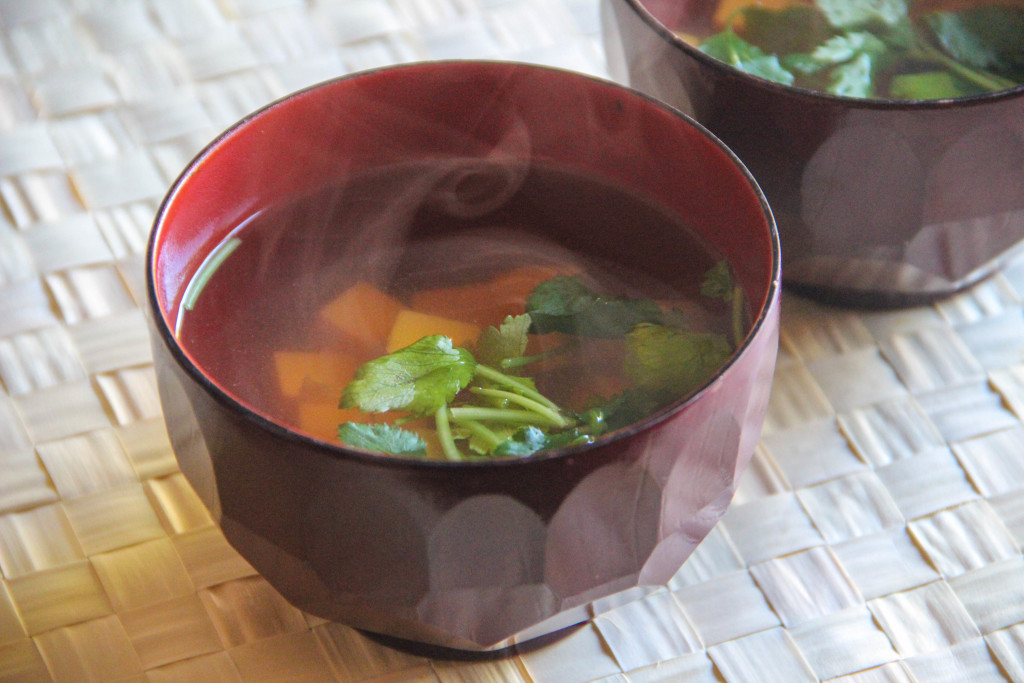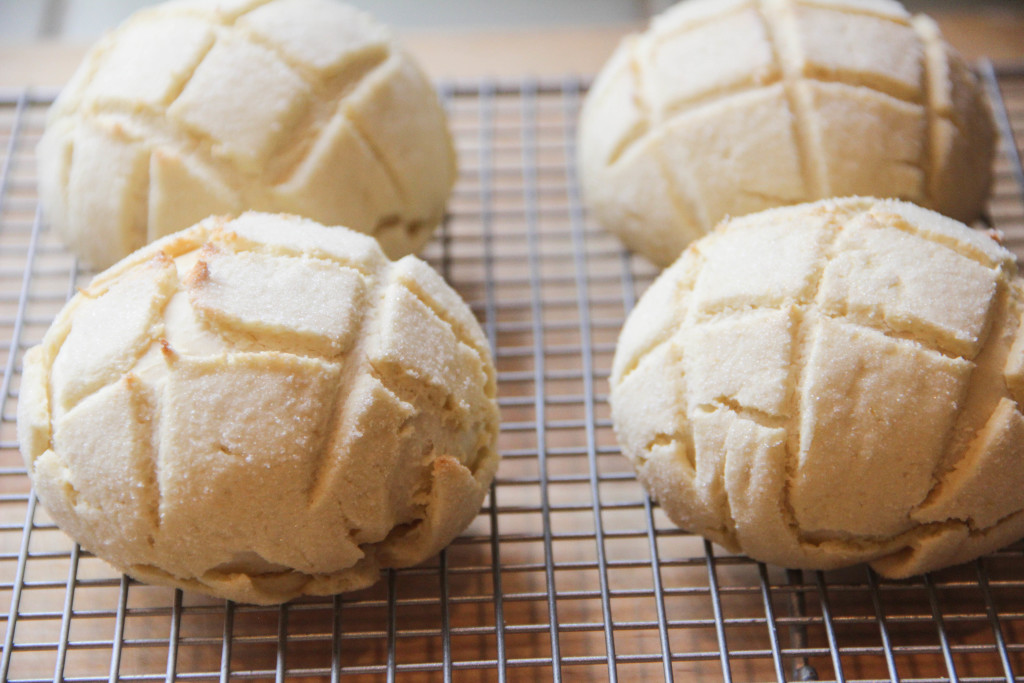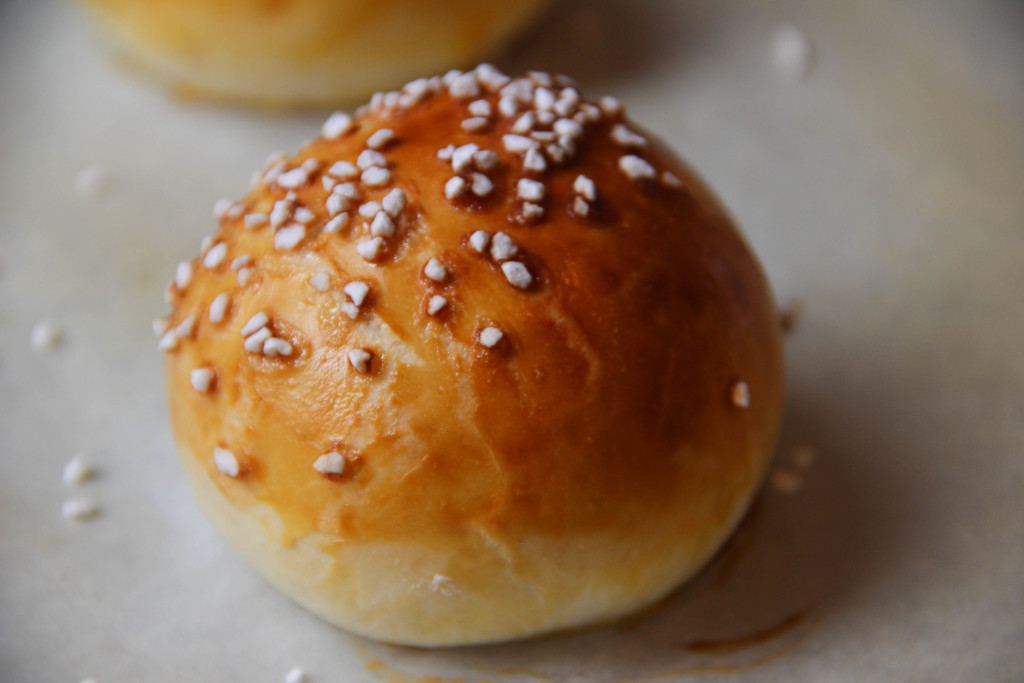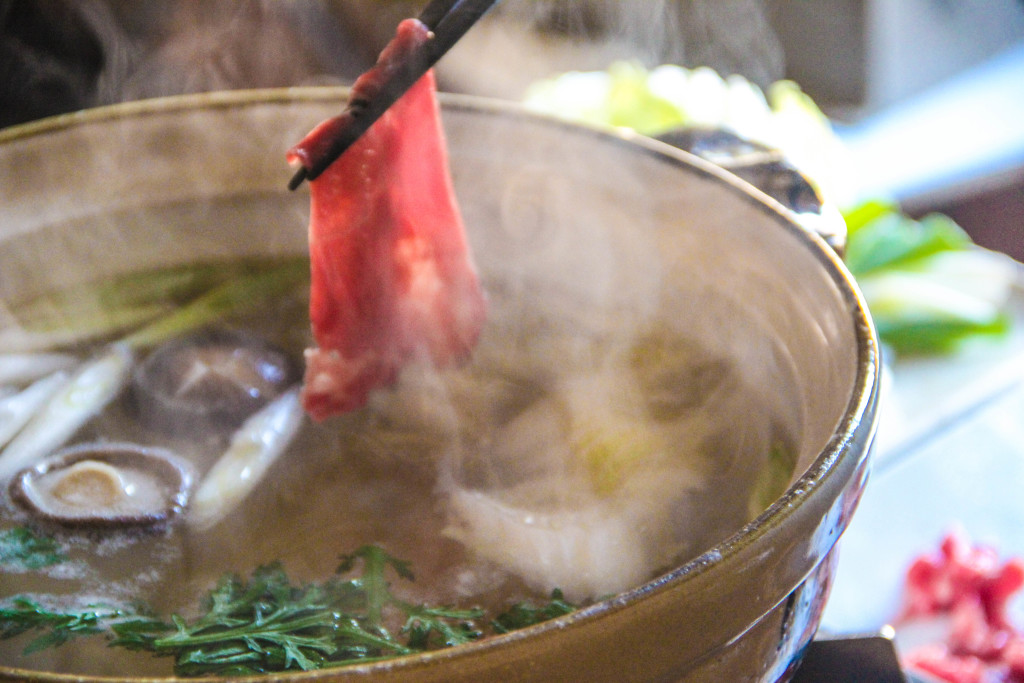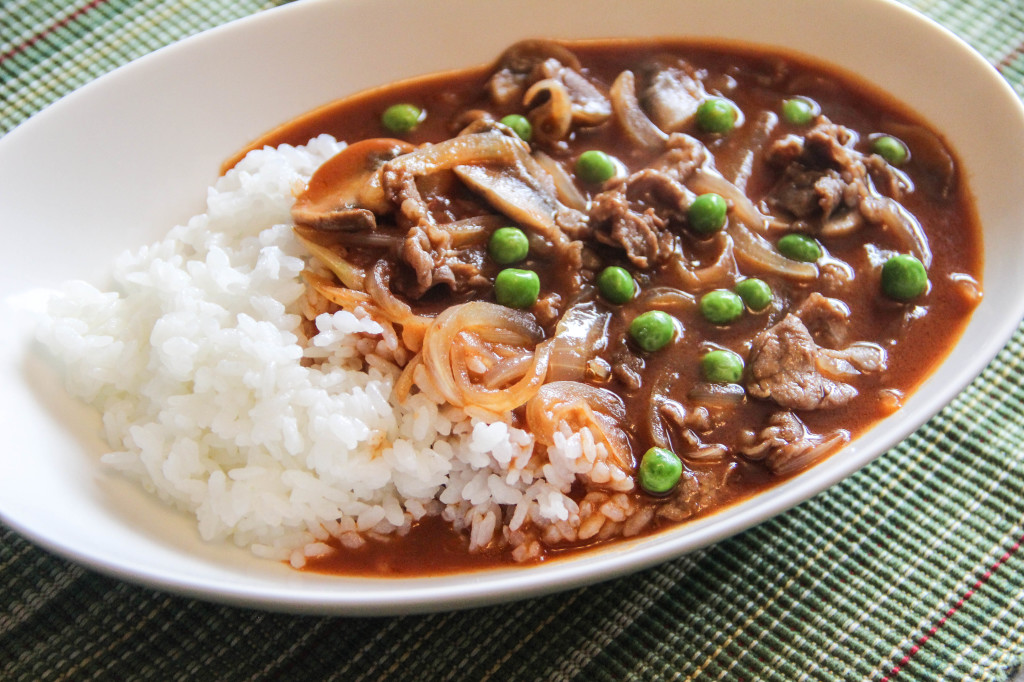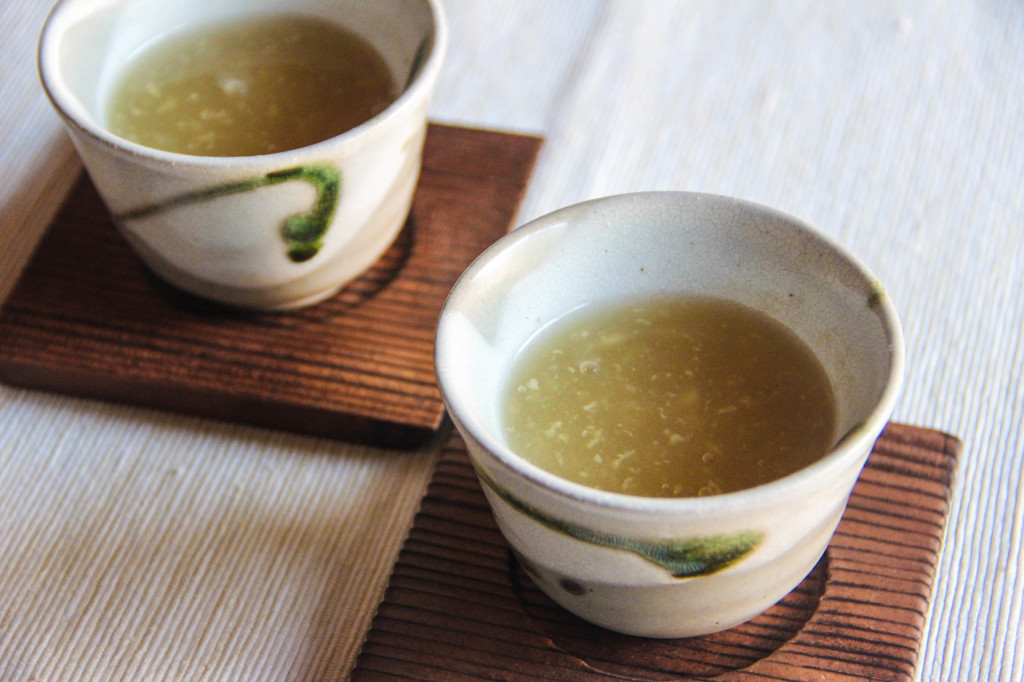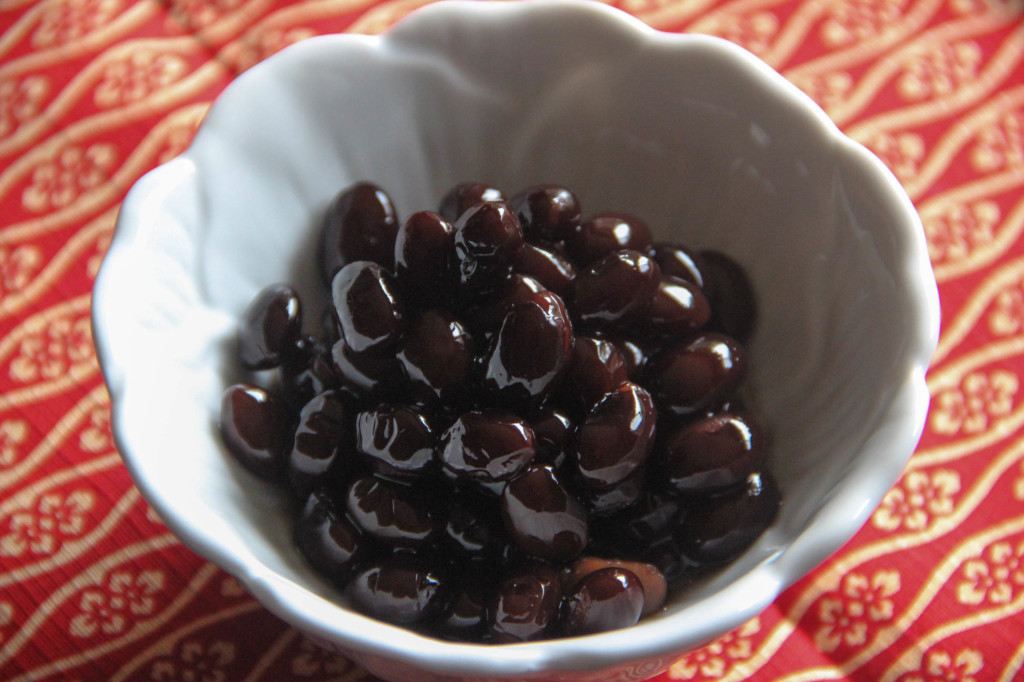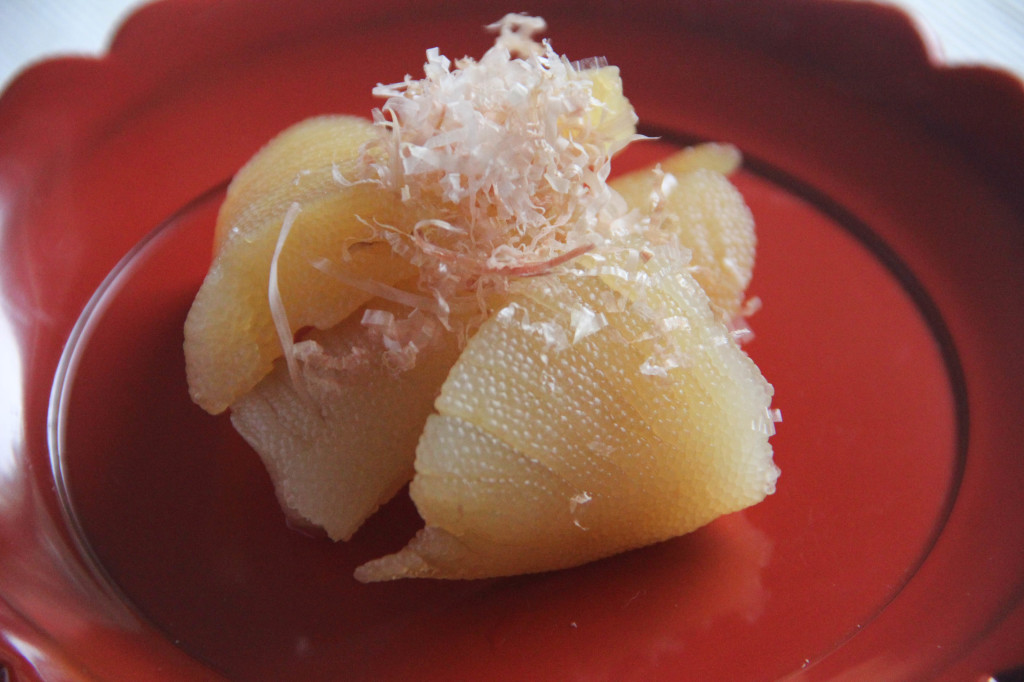Sumashijiru is a Japanese clear soup also called Suimono. Sumashijiru can be served for any occasion from everyday to more formal course meals; however, it does have a bit more sophisticated feel than Miso Soup.
Melon Pan (メロンパン) is a Japanese sweet bread with a thin cookie crust on top. It is one of the most popular Kashi Pan (sweet bread) in Japan, loved by the young and the old.
Melon Pan was created about 50 years ago in Kobe by a bread baker. Originally Melon Pan was football-shaped rather than round. Because the bread was shaped similarly to the melons commonly eaten at that time, it was named Melon Pan. Today, Melon Pan is more typically a round shape with the signature look of grid line indentations. The flavor usually has nothing to do with the name, but more recently some bread makers try to add a melon flavoring or even fruit itself to the dough. You can add melon extract to the cookie dough if you can find it (never found in the US). We added lemon zest and vanilla extract here, and that gives a nice sweet smell.
Typical Japanese Bread is a soft white bread used to make many kinds of Kashi Pan (sweet bread) such as An Pan and Melon Pan. Japanese people love the softness in bread so much that it’s almost fanatical. There are more rustic crusty breads around and they like those kinds too, however, they always go back to sweet soft bread that people are familiar with. Japanese Basic Bread has a hint of sweetness but not overly, so you can make it into either sweet or savory bread. Once you master this versatile bread, you will be able to enjoy all sorts of arrangements of Japanese bread.
Shabu Shabu (しゃぶしゃぶ) is a Japanese hot pot dish, Nabemono, with paper-thin sliced beef. It is cooked at the dinner table using a portable gas stove and we eat it as we cook. There are a lot of Shabu Shabu speciality restaurants in Japan, but you can prepare it at home too. The single most important ingredient of the dish is beef. If you can get good quality meat, the rest is not hard at all.
Menchi Katsu is deep-fried ground meat patties with chopped onions and seasonings. It is a popular western food from butcher shops and delis in Japan just like Korokke. Menchi Katsu tastes like a hybrid of Hamburger Steak and Tonkatsu. Inside is juicy hamburger, and outside is crunchy Panko crust. Even though Menchi Katsu is categorized as a “B class” cheap dish, freshly fried Menchi Katsu is as good as expensive steaks! … or at least we think so.
Miso Dressing is a tasty Miso based dressing great for salads, simple boiled vegetables (as in the recipe), and even cooked meat. This salty sweet dressing tastes quite different from western dressings, but you’ll like it if you like the flavor of Miso.
You can use either white or Awase (between red and white) Miso for the dressing. Red Miso may have too strong of a flavor for this dressing. A key flavor of the dressing other than Miso is sugar. We think a bit on the sweet side tastes better, but you can decide how much sugar you would like to use. Depending on what kind of Miso you choose, you may have to adjust the amount of sugar. White Miso is much sweeter, so beware.
Hayashi Rice is Japanese beef stew poured over Steamed Rice. Hayashi sauce has distinct flavors of demi-glace brown sauce and red wine. It has been a popular western style Japanese dish since the early 1900s. Hayashi Rice is often found on a menu at Yoshoku-ya (western style food restaurants) along with Hamburger Steak and Tonkatsu. It is also a popular home cooking dish, although the sauce is usually made from instant roux looking just like instant Curry roux. It was more popular in the 70s and 80s, but Hayashi Rice is still an old time favorite Yoshoku for Japanese people.
Shogayu is a Japanese version of ginger tea that is used as a home remedy to treat the common cold. This soothing and spicy herbal tea certainly warms up the body in cold seasons.
Kuromame are Japanese black beans cooked in sweet syrup. It is a part of Osechi Ryori, the traditional Japanese new year feast. There are a lot of kinds of dishes for Osechi, but Kuromame is one of the big three celebration dishes, along with Tazukuri (candied dried anchovies) and Kazunoko (herring roe). Sweet Kuromame is a nice complement to a lot of the other saltier dishes in Osechi.
Kazunoko is salted herring roe that has been marinated in seasoned Dashi. It is a part of Osechi Ryori, the traditional Japanese New Year feast. There are many kinds of dishes for Osechi Ryori, but Kazunoko is one of the big three celebration dishes, along with Kuromame (sweet black beans) and Tazukuri.
